Queue Management Guidelines for Retail Entrances
April 30, 2020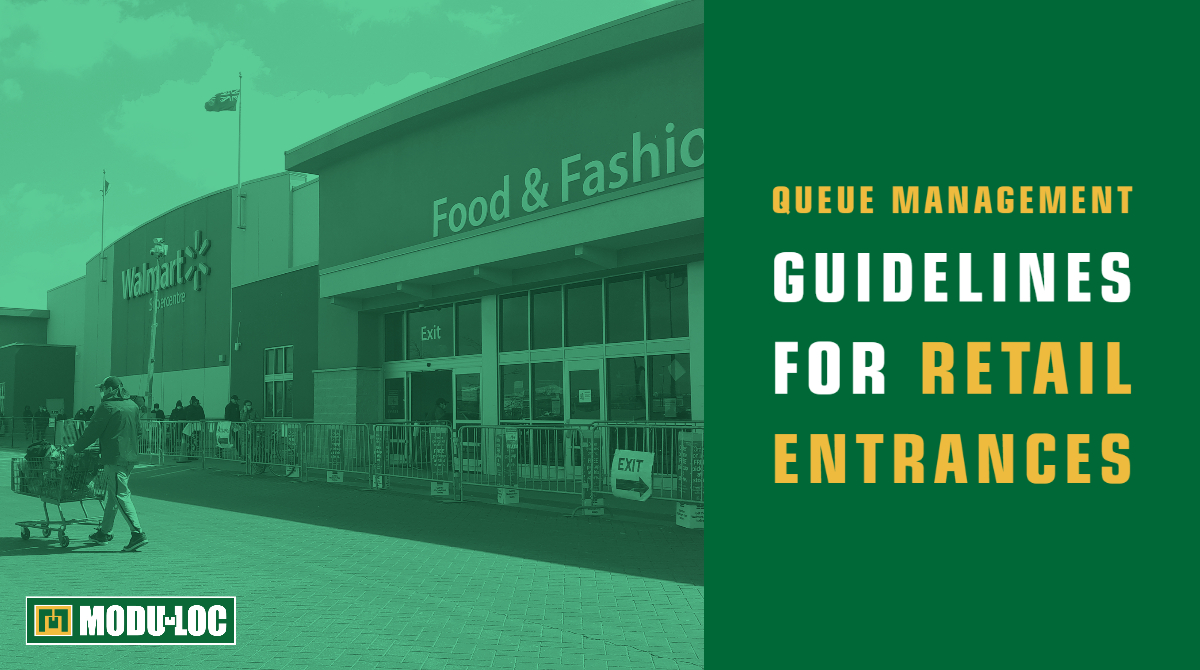
As provinces are announcing plans to reopen businesses, retailers are busy preparing for the inevitable moment that they are allowed to resume operations. Although retailers are thrilled to welcome shoppers back into their stores, things will be a far cry from “business as usual”.
The retail landscape is likely to look very different in the post-pandemic era. Provincial and federal governments may impose social distancing regulations for any businesses allowed to reopen. In other parts of the world, we’re seeing retailers implement voluntary initiatives to help keep their shoppers safe and healthy. These may include limits on the number of shoppers allowed inside, as well as designated entrance and exit queues to manage shopper flow.
Industry leaders here in Canada are already reaching out to Modu-Loc to help prepare for reopening. The most common request is for us to set up temporary fence to create controlled queues at entrances. In some cases, we are creating temporary laneways inside the store to help manage the flow of shoppers.
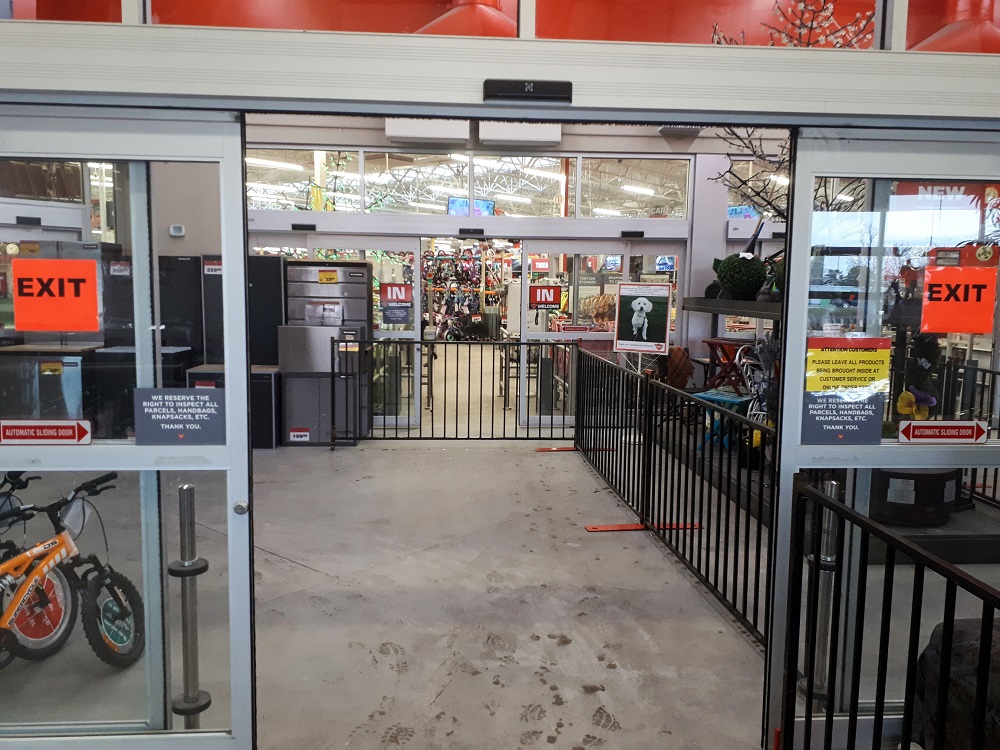
Whether mandated or voluntary, we’ve learned a lot in a short time about using physical barriers for queue management. Here are some best practices and guidelines for implementing social distancing measures at your own retail store.
Manage queues with physical barriers
Rather than allowing unstructured queues, which can result in shoppers not respecting social distancing practices, now is the time to create structure. Use physical barriers to funnel customers into a single line, which will make it easier to enforce appropriate physical distancing.
Temporary fence is one option, but there are many alternatives that will do in a pinch. Delineators with rope, stanchions, and even cones are all possible solutions. Fence is ideal because it is more robust and difficult to breach, but anything is better than nothing.
Create one-way traffic
“Ingress” and “egress” are attendee management concepts we see most often in live events, but they apply on a smaller scale to retail. To maintain proper social distancing, it’s best to force foot traffic to flow in a single direction. While it’s a no-brainer to set up a controlled queue at the entrance, you may not have considered managing traffic at the exit. Use physical barriers to funnel customers out of the store in a single line. This will make it more difficult for any crowding to occur at exit points.
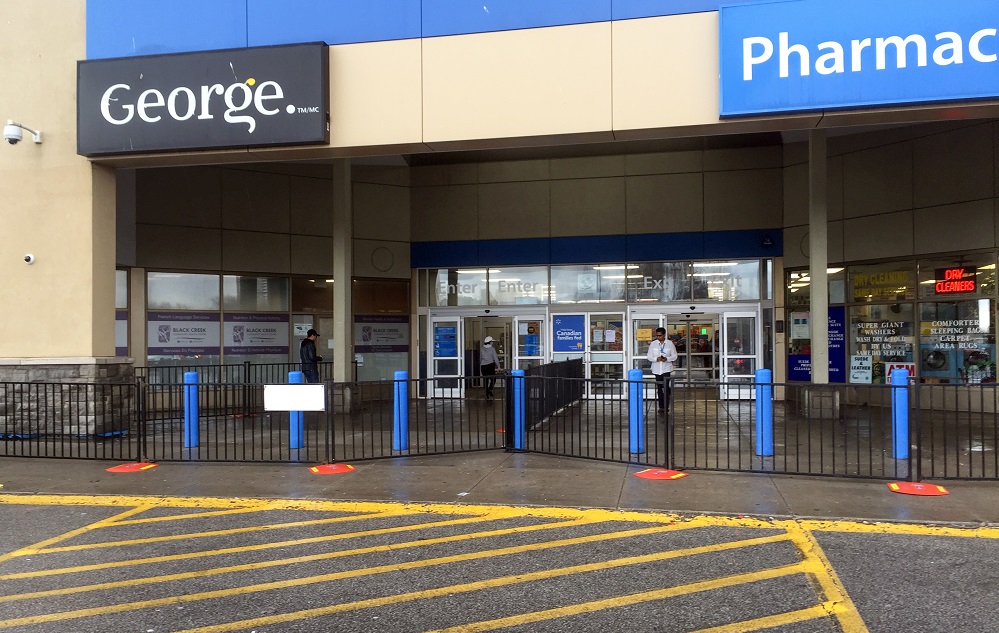
Look out for trip hazards
Bases on temporary fence panels or delineators can pose a trip hazard. The last thing you want is to open yourself up to liability while trying to maintain the safety of your customers! Ensure barriers are placed far enough away from store fixtures so shoppers can walk on solid ground and avoid the bases. If using temporary fence, consider adding safety ramps to the bases to provide a smooth transition.
Allow sufficient space
In addition to allowing sufficient space between barriers and store fixtures, ensure your temporary chutes or laneways are at least 48” wide. Your store aisles are likely wide enough to accommodate strollers, shopping carts, and wheelchairs. Make sure to apply those same principles to your social distancing measures. This includes any queues you create outside the store.
Make use of gates
If you’re using fence to create chutes or queues, consider adding swing or sliding gates at regular intervals. Gates are especially useful if you’re creating a snake queue. By installing sliding gates at every other bend, for instance, you can quickly reconfigure the queue or close it off altogether to manage crowds. Gates can also serve as emergency exits in a particularly long queue. At a minimum, you should ensure that sections of the barrier can be easily removed or disconnected in the case of an emergency.
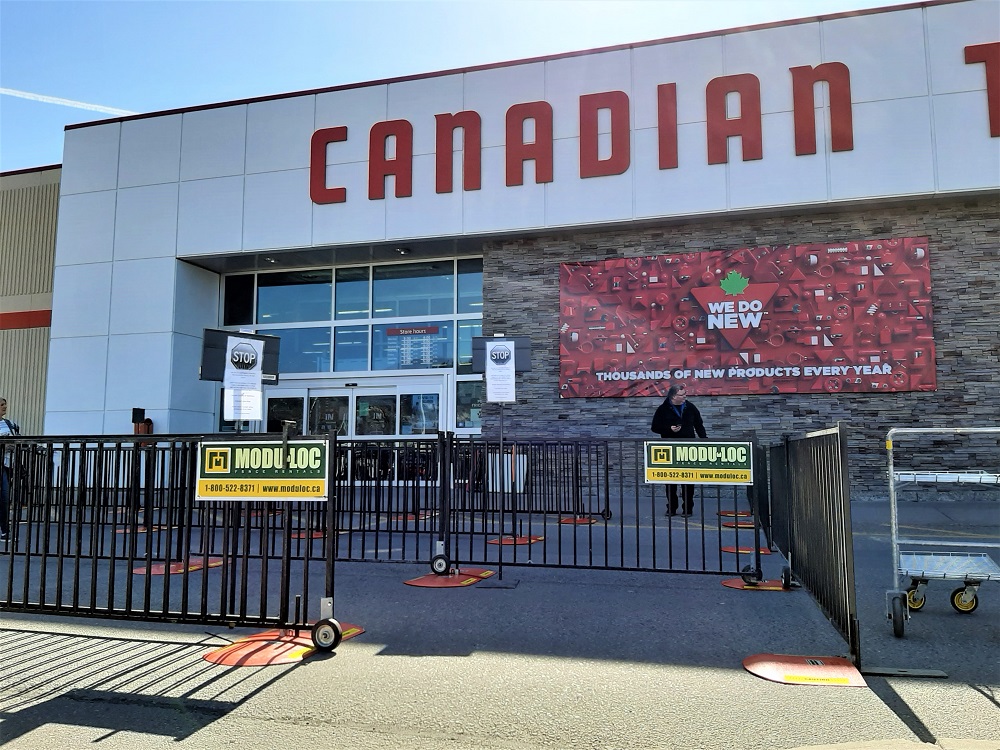
Protect your floors
If using temporary fence indoors, you’ll want to take steps to protect the finish of your floors. Non-slip safety mats can be used under barriers to prevent scuffing. As an added bonus, they will also prevent fence from sliding or being pushed out of configuration.
If creating gates for temporary barriers, look for rubber gate wheels to prevent damage to the floors.
Hang signage
If the temporary barrier can accommodate it, consider hanging signage throughout the queue. You have the attention of your shoppers while they’re waiting in line…take the opportunity to communicate with them! This can include memos about what you’re doing to protect your customers, reminders about appropriate COVID etiquette (such as maintaining a distance of 2 metres from other shoppers), or even store promotions. One of our customers posted signs with QR codes so that shoppers could access more information from their smartphone while waiting in line.
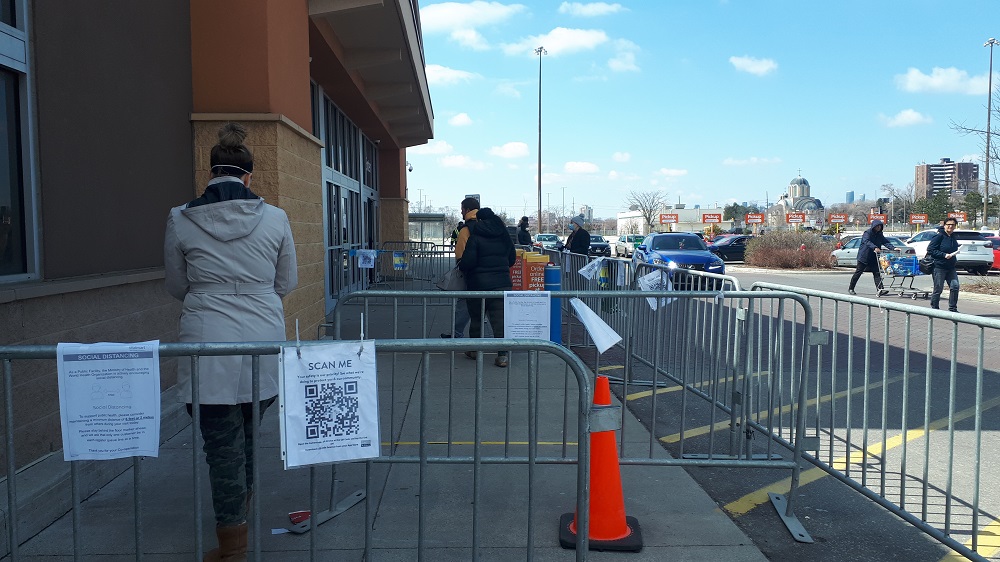
You can also add markers to the barriers to indicate appropriate physical distance. Some of our retail clients have done this by adding delineators at 2 metre intervals, but there are plenty of low-cost alternatives. Tape or ribbons tied around the barriers work just as well.
Make it visible to drivers
Visibility is critical when installing physical barriers to create queues outside of the store. Often, exterior queues are created near or even in a parking lot. Assess whether the barriers can be seen be drivers in the dark. Consider the fact that shoppers who are familiar with your store may not expect temporary fence to suddenly appear in the parking lot.
If the barriers are difficult to see in the dark, add reflective tape or high-visibility accessories with reflective properties. Cones and delineators are a good option. We can’t emphasize this enough: ensure the fence is visible in the dark. This is the best way to avoid paying for damaged fence panels and vehicles.
If you’re using fence for temporary queue management
If you’ve decided to rent temporary fence for queue management or social distancing, know that some types of fence are better-suited to this purpose than others. Look for fence that’s about 40” high – that’s the standard height for crowd control barricades. You can deviate from this slightly, going as short as 36” or as tall as 4’. But anything too short will allow shoppers to step over the barrier, and anything too tall will make your store feel like a prison.
If you plan to move the fence around (for instance, to reconfigure queues or close off checkout areas), look for a lightweight option that has bases or “feet” which are attached to the panel. This way you can lift and carry the panels as needed, rather than sliding them or disassembling the fence line.
Finally, we recommend having the fence professionally installed to ensure optimal safety and stability. Fence that is not properly installed can pose a risk to shoppers. In most cases, professional installers can have your queue set up in less than an hour.
That being said, if you decide to go the DIY route, make sure to follow your supplier’s instructions and best practices to ensure your queue is as safe and secure as possible.
Still have questions? Reach out to us for our expert suggestions and recommendations for a safe and effect queue management system. We’re happy to help during these challenging times.
We’re here to answer any questions you may have.



 Canada - EN
Canada - EN Canada - FR
Canada - FR United States
United States




